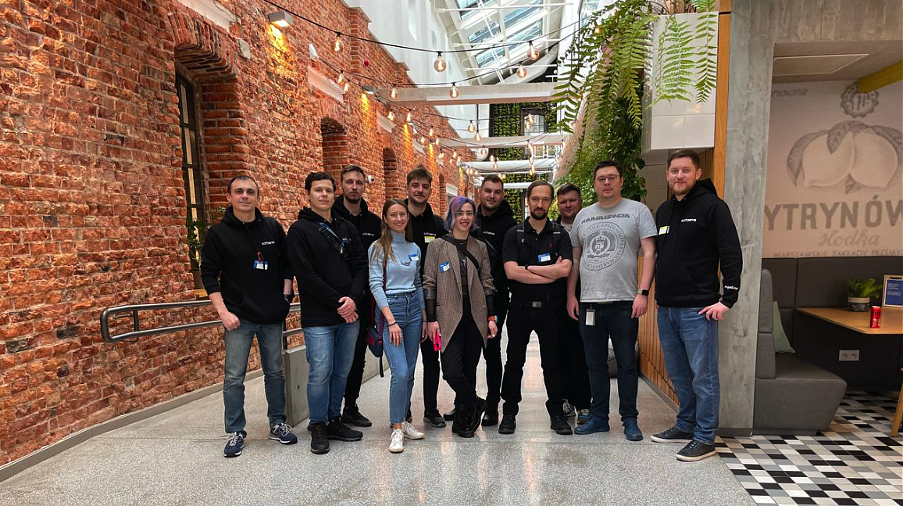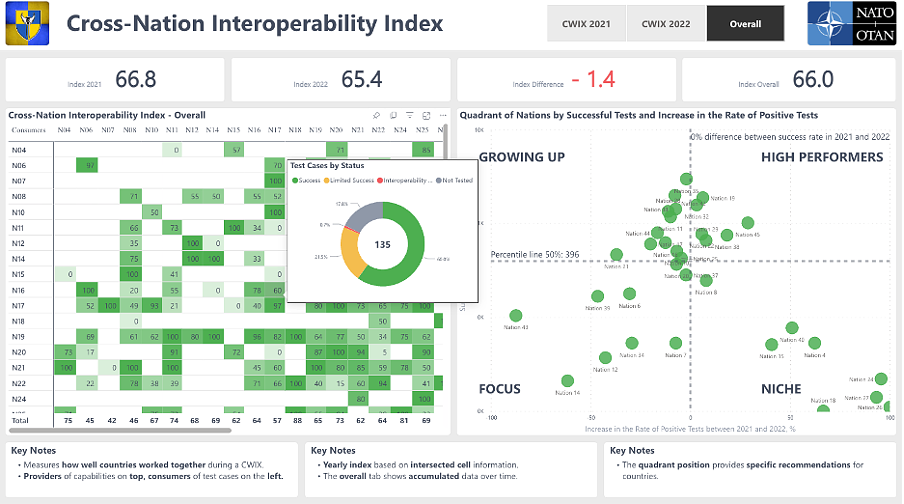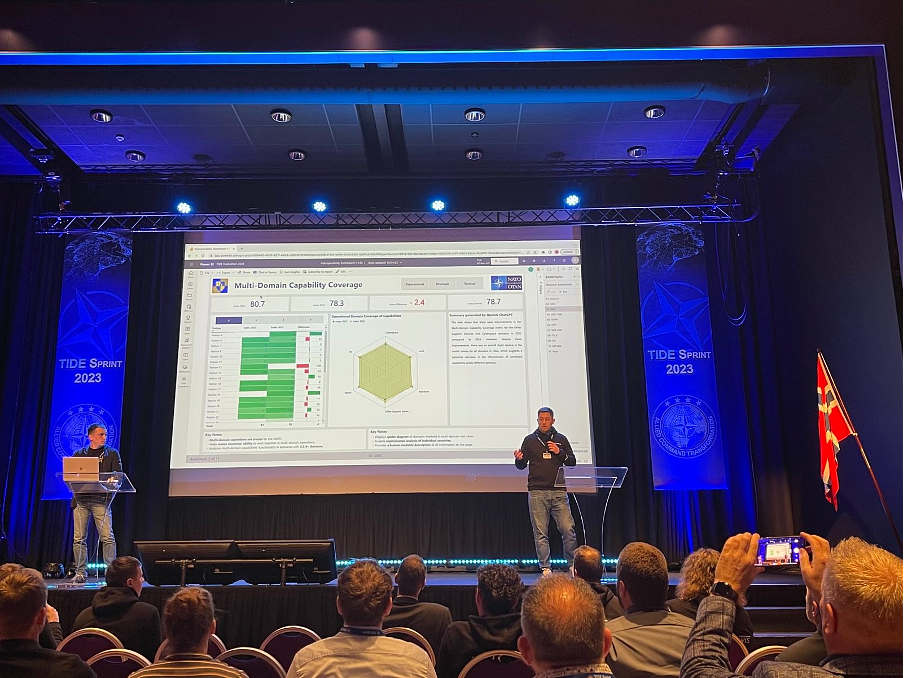
Why Developers Should Participate in Hackathons
Hi, I’m Taras Kloba and I’m an expert in Big Data and Data Management (Data Governance) fields working at SoftServe. In addition, I’m the co-founder of the Ukrainian community PostgreSQL, the winner of the Ukrainian IT Awards, and a certified SEI, AWS, Google Cloud, and Microsoft specialist.
Over the last year, as a part of the team, I’ve won two hackathons: the National Defence Hackathon and the TIDE NATO Hackathon in Warsaw. In this article, I want to share our experience and shed light on why hackathons are useful for developers not only in terms of skills development and search for new tech solutions but also why it is important to use all opportunities to help develop the brand of Ukraine on the international level and strengthen national security using technologies.
What is a hackathon?
A hackathon is an intense competition lasting for a couple of days, where participants develop technical solutions or implement ideas to solve certain problems. Those problems can vary from already developed ideas and concepts to prototypes that teams can improve during the hackathon. As a rule, they are presented to the organizers looking for innovative approaches. So, it is not only about the coding in the competition but also about previous experience, skills, and participants’ backgrounds.
As for me, it is a perfect place to establish new connections and build a network among participants and organizers. A hackathon gives an opportunity to showcase capabilities, work on pioneering projects, and acquire new knowledge and experience in the professional field. The video from the hackathon can be viewed here.
National defence hackathon: starting point
Since the beginning of the full-scale war, my colleagues and I are helping our country in every possible way. For instance, our Big Data and Data Science team, in collaboration with state authorities and regional state administrations, has created a system for an automatic checkup of a vehicle on newly established roadblocks. The idea was to analyze a video to recognize car plates and automatically check them in the databases of the Ministry of Internal Affairs (lists of stolen cars) and other available databases. This product continues working and its limited version can be tested with the help of the Telegram chatbot.

While working on this project, our team of experts in Big Data and Data Science, got close to the military-related projects and now we are developing several initiatives for our defenders (details of which I cannot share right now). With the same team of experts, we decided to take part in the National Defence Hackathon in Ukraine. The event was organized by the National Security and Defense Council of Ukraine in partnership with DC8044 and Cyber Unit Technologies. As it was stated by the organizers, we were supposed to work on relevant challenges for our defenders. This motivation was enough for us to enter the competition.
On the hackathon, there were several technical streams. In fact, we were asked to analyze available databases and reveal correlations among them. For the analysis, we selected databases that include activity in the propaganda Telegram channels and statistics of missile strikes in Ukraine. Eventually, we were able to identify certain connections among those data, that potentially could help in forecasting future attacks.
One of the other tasks was to develop an algorithm or solution for automatic geospatial identification based on the received IP address. Also, we worked on the task related to unstructured data. Our aim was to develop tools for intelligence and journalists that could work out the enemy’s personal data, reveal connections, and execute OSINT-investigation. To build the solution, we used graph databases and indexation tools for full-text search.

As a result, our team was placed the first among private organizations. All in all, there were 41 teams and 300 participants from private and state sectors. As for me, the key to successful participation in the National Defence Hackathon was a close-neat team. Thanks to the cohesive teamwork, we were able to quickly adapt to new challenges and perform the task efficiently.
Another important component was the available infrastructure for developing IT solutions. Having one, we focused on solving certain tasks without losing time on building a basic infrastructure from scratch. Additionally, access to experts in other fields from different departments at SoftServe gave us an opportunity to receive highly qualified advisory support.

But, most certainly, we owe our success to the ability to distribute tasks perfectly. We identified each other’s strengths and assigned tasks according to them. Thus, the potential of each team member was used to its fullest.
Inside of the tide NATO hackathon
By winning the National Defence Hackathon, we received a chance to participate in the TIDE NATO Hackathon 2023, which is a part of a cycle of events, aiming to improve the interoperability of NATO and partners through the search of innovative solutions and approaches. We strived to win to propose the best solutions for the improvement of cooperation among the NATO countries states and to get more people to hear about Ukraine.
The hackathon lasted five days. It was a unique opportunity to meet in person and work on interesting tasks as our team members are working remotely. As such competitions require knit cooperation, it is essential to establish contacts and mutual understanding in the team before the beginning. As the hackathon working hours were from 8 AM till 7 PM, we barely had spare time, except for a dinner together. Almost all the free time we got, we spent working on the assignment. It was intense, but we had a clear understanding that without pulling efforts it is impossible to win a competition of that level. Before the hackathon started, we had to go on some excursions, but due to the tight schedule, most of them had to be postponed. Nevertheless, we were lucky enough to visit Google Campus for Startup and Microsoft Innovation Center, where we got invaluable experience for future projects. I highly recommend looking for such opportunities and using them.

To sum up, during the TIDE NATO Hackathon, our task was to create an interactive data panel for multinational NATO CWIX exercises. During the event, Alliance and partner nations are checking how IT systems of allies would interact in combat conditions and developing KPIs that would show how successful such gathering would be in comparison to previous years.

We went beyond the scope and analyzed the advantages of such exercises and disadvantages of those systems interaction. Based on this, our team generated an efficiency index and developed recommendations for improving CWIX exercises. The judges evaluated our solution and as a result, we won one of the challenges. The award ceremony was held on February 24, a year after the full-scale war began. That’s why, it was a symbolic date for us and one more opportunity to remind the international community of the unprovoked war that russia launched against Ukraine.
The award ceremony at the TIDE NATO Hackathon 2023
How to get ready for a hackathon?
The first thing from the checklist is a team. As I am lucky enough to be a part of a group of the like-mindedvolunteers, it is not scary to take up the hardest technical tasks with them. Also, it is important to combine unique skills and experience of each member without repeating each other’s roles.
Secondly, as I’ve mentioned before, hackathons are not only about coding. Even in the application stage, the tasks are more or less clear, and it is crucial to begin the preparation before the official start. We had quite a serious competition, as teams from the Ministries of Defense from other NATO state members, that are working with such domains daily, were participating too.
On February 6, we received a confirmation from NATO in Ukraine that we were qualified to take part in the TIDE NATO Hackathon. It was two weeks before the start and it was the beginning of intense preparation. Our team had daily syncs (as a part of a volunteer project), but we added another three hours of meetings per week to prepare for the hackathon. We assigned tasks and investigations, and each member was working on workpieces on the assigned topic. It resulted in positive outcomes.
Furthermore, it is essential to use opportunities inside the company. We reached out to our colleagues and received extra knowledge, hence, fastened our preparation. For example, we contacted BI and Big Data Architects, Designers, DevOps Engineers, and Technical Communicators.
There were two teams from SoftServe at the TIDE NATO Hackathon, Valkyrie-1 and Valkyrie-2 (participated in the disinformation challenge). For the second team, we consulted specialists from the Innovation Center at Ministry of Defense, volunteer teams from the project Pravdorub and the management of YouScan, that are experienced in analyzing social media on the basis of Artificial Intelligence. Without all insights and experience, we wouldn’t be able to win the NATO Hackathon, so my advice to you – use all opportunities at your disposal not only at your company but also at top companies and organizations in the field.
What are hackathons advantages for developers?
After successful participation in hackathons, we received an opportunity to present our solution at the NATO Spring in Norway, the biggest NATO conference in 2023. It was held in the picturesque city of Lillehammer, where the Winter Olympic Games 1994 took place. There was a huge interest in using technologies during the war in the lobbies of the conference. Participants were hooked on different aspects, such as the work of information systems, how it helps citizens enhance situational awareness about the enemy, and how this data is used in real-life cases. Also, there was an interest in the cases of foreign systems usage, particularly, satellite images, and how those technologies alongside the bravery of the Armed Forces of Ukraine are impacting the course of the war.

This experience gave us a lot of valuable knowledge and important connections, among which are:
- The chance to get to know the developments of other countries in technology to increase the defense capability.
- Better understanding of approaches and standards of software development to create a common field for communication among allies' countries.
- A fruitful dialogue with the Ukrainian military, that were participating in the conference as well, and establishing connections, that resulted in the acceleration of previously started processes related to confronting the enemy during the war.
- Strengthening the team of experts, who gathered to work side by side to enhance countries' defense.
Thanks to the successful participation in hackathons and the NATO conference, our team became more cohesive and got an impulse to develop our volunteer projects. That’s why, we recommend to other members of the commercial IT sector to participate in such events. This kind of activity empowers you to represent Ukraine with dignity on the international level, expand your expertise and experience, and establish collaboration with other countries’ representatives in technology and defense as well.


